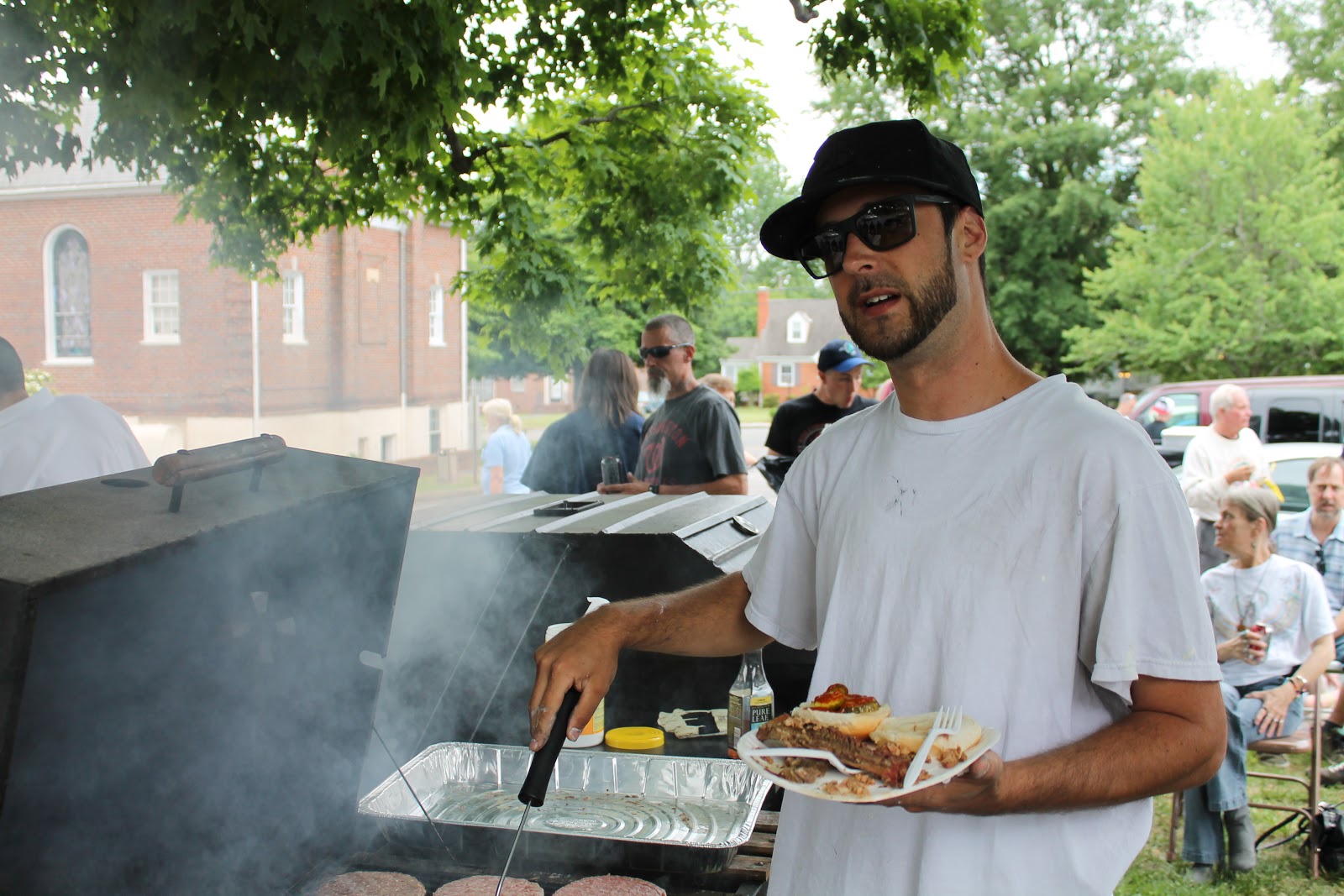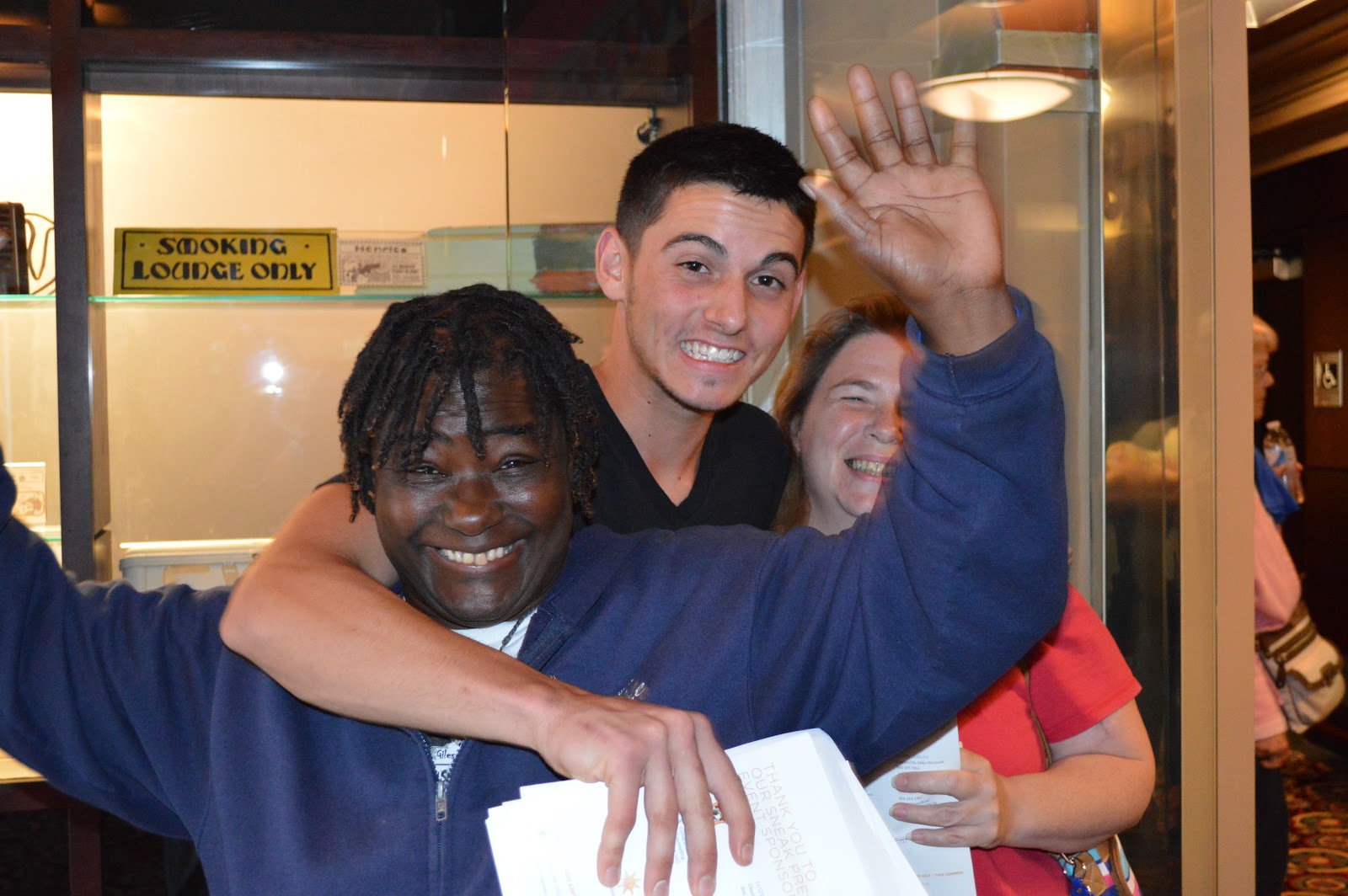Founded in 2004, The McShin Foundation is Virginia's leading non-profit, authentic full service Recovery Community Organization. We are committed to serving individuals and families in their fight against Substance Use Disorders and are changing lives in this process.
Saturday, November 23, 2013
Saturday, October 19, 2013
Saturday, October 12, 2013
Wednesday, October 9, 2013
Welcome Back!
The Mcshin Foundation blog is back up and running! We will have new video footage uploaded in the near future, and more news and events will be posted!
Tuesday, October 8, 2013
Recovery Fest 2013
Over 3,000 in attendance along with the Deputy Director of National Drug Control Policy, Michael Botticelli.
It was a great day in Recovery, and one of the best Recovery Month celebrations in VA.
visit: bbq.mcshin.org for next years event information
and mcshin.org for more on Recovery in Virginia and Recovery Community Organizations.
Thursday, July 25, 2013
Last Years Pool Party Video:
Pictures of past pool parties will be showing up on our Google Plus posts.
Friday, June 7, 2013
Thursday, June 6, 2013
Advocacy in Action
McShin Foundation supports Delegate Betsy Carr of the 69th!
Wednesday, June 5, 2013
Project Lazarus comes to Southwest VA
The McShin Foundation helped pass a bill legalizing nasal Naloxone at this year's General Assembly. Governor McDonnell has signed the bill into law, and it will be enacted on July 1 of this year! The bill calls for two pilot programs: one in rural southwestern Virginia and the other in urban Richmond. This past weekend, a meeting was held with CSB members and members of Project Lazarus (of North Carolina) on a starting up the rural SW VA program!
Project Lazarus comes to Southwest VA
Project Lazarus comes to Southwest VA
Project Lazarus to help Southwest VA battle opiate abuse
By Kristen Conner
RICHLANDS, V. a. (WVVA)-- A group from North Carolina hopes to help Southwest Virginia reduce its prescription drug abuse problem.
The Lazarus Project, a community effort in NC aimed at stopping opiate abuse, came to Tazewell County Wednesday to hold a forum with leaders there. They brainstormed ideas about how to tackle the problem, together.
Police said Wednesday that overdose deaths in Tazewell County are the highest per capita in the Commonwealth.
The group wants to save lives, but also motivate the whole community to act.
Fred Brason, President of Project Lazarus, said, "We help build coalitions in communities. It's not somebody coming in from the outside saying, 'we're going to fix your problem.' That's not what we're about. We're helping, through technical assistance and training, how community coalitions can address the problem themselves."
One Care of Southwest VA is partnering with The Lazarus Project in Tazewell County. They hope to act on ideas they have brainstormed in the coming months.
Project Lazarus to help Southwest VA battle opiate abuse
The McShin Foundation helped pass a bill legalizing nasal Naloxone at this year's General Assembly. Governor McDonnell has signed the bill into law, and it will be enacted on July 1 of this year! The bill calls for two pilot programs: one in rural southwestern Virginia and the other in urban Richmond. This past weekend, a meeting was held with CSB members and members of Project Lazarus (of North Carolina) on a starting up the rural SW VA program!
From WVVA.com: [LINK]
Project Lazarus to help Southwest VA battle opiate abuse
By Kristen Conner
WVVA TV Bluefield Beckley WV News, Weather and Sports
From WVVA.com: [LINK]
Project Lazarus to help Southwest VA battle opiate abuse
By Kristen Conner
WVVA TV Bluefield Beckley WV News, Weather and Sports
RICHLANDS, V. a. (WVVA)-- A group from North Carolina hopes to help Southwest Virginia reduce its prescription drug abuse problem.
The Lazarus Project, a community effort in NC aimed at stopping opiate abuse, came to Tazewell County Wednesday to hold a forum with leaders there. They brainstormed ideas about how to tackle the problem, together.
Police said Wednesday that overdose deaths in Tazewell County are the highest per capita in the Commonwealth.
The group wants to save lives, but also motivate the whole community to act.
Fred Brason, President of Project Lazarus, said, "We help build coalitions in communities. It's not somebody coming in from the outside saying, 'we're going to fix your problem.' That's not what we're about. We're helping, through technical assistance and training, how community coalitions can address the problem themselves."
One Care of Southwest VA is partnering with The Lazarus Project in Tazewell County. They hope to act on ideas they have brainstormed in the coming months.
Tuesday, May 28, 2013
Memorial Day Cookout Pics!!
Recovery in ACTION!
John S. Cheezin'
Taylor handling a box of beef
Miss Patty
Honesty!!! My favorite!
David Rook and Cameron
David and Sleepy Sam
Karen, Arlene, James
Super cute cast!
Hannah soaking up the sun
Glen hearts the 80's!
Mary Hope: Alumni action!!
New clients
Menu: BBQ pulled pork, brisket, burgers, and hot dogs!
Jeremy helping out on the grill
Danny!!!
Beautiful girls
Destiny and Ryan
Another Sam
Michelle and Hannah!
Hannah 2 and Miss Holly
~Diamond~
TK and Rook
Sean, Cameron, Blake, Brandi
Cornhole!
more cornhole!
Arlene and Evan
Head Honcho
James: an alumni!
POOCH
Jimmy B and Sammy
C-hole
Yours truly~
Monday, May 27, 2013
Memorial Day Cookout!
Today at 1 pm, McShin Foundation will be hosting a cookout open to clients, families of clients, and alumni.
Hope to see ya'll there!!
Friday, May 24, 2013
Dillon and McShin Day Program
Wednesday, May 22, 2013
Scientific American: The No-Help Cycle: Jail Fails Addicts
*Reblogged from the Scientific American blog
By Cassie Rodenberg | April 30, 2013
The No-Help Cycle: Jail Fails Addicts
By Cassie Rodenberg | April 30, 2013
Sonya and Eric: Hunts Point, Bronx. Courtesy of Chris Arnade.
Sonya’s going to court today to see her husband, Eric. This is his first felony. “My husband cannot have money in his pocket and not get drugs,” Sonya said, shaking her head forcefully. “It’s not possible.” Eric was caught buying/selling/using. A blur of charges stacked, misdemeanor to felony level.
She hopes the Bronx criminal court offers her husband, a heroin addict, a residential substance abuse treatment program in exchange for sentence time. Everyone knows that you can’t have too long a drug record to get a treatment offer, but he’s pretty new in the NY state system. Still, it’s a gamble and depends on the judge. Sonya’s nervous and asks for prayers.
At the beginning of his stay in late March, Rikers Island jail gave Eric methadone, but soon after, the jail stopped providing, and he went off cold turkey.
Eric and Sonya have been heroin addicts for years, a substance they’ve chased around the US — New Orleans, Rhode Island, Hunts Point.
Substance Use and Mental Health DisordersSubstance use disorders among inmates are at epidemic proportions. Almost two-thirds (64.5 percent) of the inmate population in the U.S. (1.5 million) meet medical criteria for an alcohol or other drug use disorder. Prison and jail inmates are seven times likelier than are individuals in the general population to have a substance use disorder. One-third (32.9 percent) of the 2.3 million prison and jail inmates has a diagnosis of a mental illness. A quarter (24.4 percent) of prison and jail inmates has both a substance use disorder and a co-occurring mental health problem.*
Sonya anticipates how bad it will be when Eric’s released: the bundle (10 bags) of dope he’ll find himself drawn to, despite being clean from use. She remembers back in New Orleans where she spent 34 days in jail, a span that hardly counted. Despite the brevity, she doesn’t remember much until her first bag of dope a few hours later. She managed to get the drug on credit from a dealer, shooting it fast right there, who cared who was looking. She was home, home to the feeling.
The Treatment GapOf the 1.5 million prison and jail inmates who met clinical diagnostic criteria for a substance use disorder in 2006, only 11.2 percent had received any type of professional treatment since admission. Only 16.6 percent of facilities offer treatment in specialized settings which can produce better outcomes for offenders as measured by drug use and arrests post-release. Few inmates actually receive evidence-based services, including access to pharmacologicaltreatments, and the availability of highly trained staff is limited. Simply offering treatment, even in specialized settings, does not mean that the treatment is available to all who need it or of adequate quality.
In terms of adjunct services, 22.7 percent of inmates with substance use disorders participated in mutual support/peer counseling and 14.2 percent received drug education; however, such services alone are unlikely to create lasting behavioral changes among those in need of addiction treatment.
Charlie, a long-time cocaine and heroin user, is at the start of a multi-year stint in upstate NY prison. She’s been in before.
The other times, though, one of her girls had snuck her drugs, ferrying opiates sewed into packages of clothes. A privilege of being a pimp, perhaps. This prison is further away from her usual city lockup, in Westchester County, about an hour drive from the city, and her girls don’t have cars. And so, she’s detoxing without medication, laying in bed day in and out, sleeping little out of discomfort, unable to concentrate on much more than not getting sick. The first time in 25 years.
Her thoughts apart from pain focus on her now-young adult brother who she raised after her parents died when she was a young teen. She worries what he’ll fall into while she’s away, what lifestyle habits he’ll collect back in South Bronx. He calls running the streets cool, ignores Charlie’s protests otherwise.
Children of InmatesIn 2006, American prisons and jails held an estimated 1.0 million substance-involved parents with more than 2.2 million minor children; 73.7 percent (1.7 million) of these children are 12 year of age or younger. The minor children ofinmates are at a much higher risk of juvenile delinquency, adult criminality and substance misuse than are minor children of parents who have not been incarcerated.
Beauty was born in Oklahoma prison, her mom a crack addict who spent most of Beauty’s childhood behind bars. Beauty herself spent the better part of this fall and winter in jail, and, after, has continued to sink deeper into her K2 (synthetic marijuana) dependency.
Similarly, Roland grew up in a Brooklyn children’s group home, after his mom died of a heroin overdose. He’s now in jail now, for drug possession misdemeanors, where he misses his toddler son.
Both Beauty and Roland live homeless in Hunts Point. Both are 22 years old and have been locked up for the first time and for multiple times after in the span of the last year.
Reentry of Substance-Involved Inmates
Substance-involved offenders are likelier to recidivate than those who are not substance involved. Over half (52.2 percent) of substance involved inmates have one or more previous incarcerations compared with 31.2 percent of inmates who are not substance involved.High rates of recidivism translate into burdensome incarceration costs for society, averaging $25,144 per inmate, per year and ranging from a low of $10,700 in Alabama to a high of $65,599 in Maine. Breaking the cycle of re-arrests and re-incarceration requires breaking the cycle of addiction.
After having gone through drug-related arrests in multiple states — enough so that she avoids some areas altogether (mainly the Gulf coast) — Sonya doesn’t know what’s next. She panhandles in front of a Manhattan Petco to support her habit, waits for Eric to return from jail to construct widespread dreams of escaping New York, getting off of heroin, maybe going to sea, or just going anywhere. Starting over, somehow.
“I can’t go outside because I’m scared I’ll get locked up. I can’t get locked up because Eric already is, and then we’d have nothing when we came out. I’m not hurting anybody. I keep to myself, stay away from drama. It doesn’t matter though. After a while you get that nobody’s on your side. Nobody’s going to help you.”
Few Inmates with Substance Use Disorders Receive Treatment
Of the 1.5 million inmates with substance use disorders in 2006, CASA estimates that only 163,196 (11.2 percent*) received any type of professional treatment, including treatment in a residential facility or unit (7.1 percent), professional counseling (5.2 percent) or pharmacological therapy such as methadone, antibuse or naltrexone (0.2 percent). Less than one percent (0.9 percent) received detoxification services.
————————-
* Report (PDF):
“Behind Bars II: Substance Abuse and America’s Prison Population.”Casacolumbia.org. The National Center on Addiction and Substance Abuse at Columbia University, Feb. 2010. Web. 29 Apr. 2013.
* Report (PDF):
“Behind Bars II: Substance Abuse and America’s Prison Population.”Casacolumbia.org. The National Center on Addiction and Substance Abuse at Columbia University, Feb. 2010. Web. 29 Apr. 2013.
Thursday, May 16, 2013
Subscribe to:
Comments (Atom)










































































